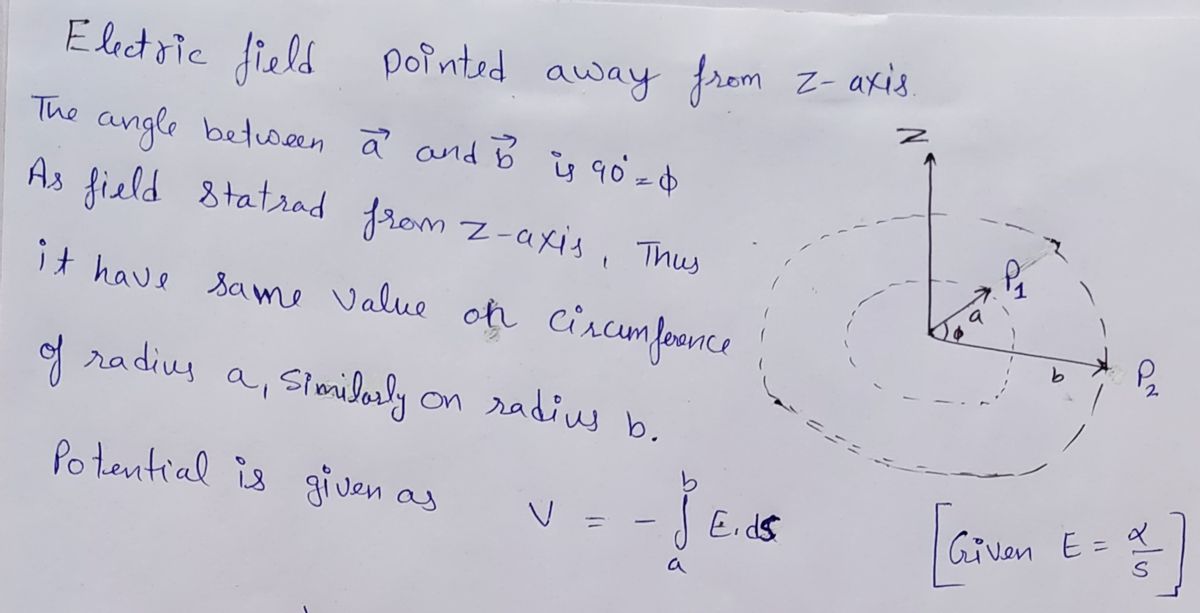ZA a b
Related questions
Question

Transcribed Image Text:**Problem 5: UP 7.43**
The electric field in a region is pointed away from the z-axis, and its magnitude depends on the distance \( s \) from the axis. The magnitude of the electric field is given as \( E = \alpha / s \), where \( \alpha \) is a constant. Find the potential difference between the two points \( P_1 \) and \( P_2 \), shown in the figure to the right. Explicitly state the path over which you conduct the integration for the line integral.
**Explanation of Diagram:**
The diagram illustrates a three-dimensional cylindrical coordinate system with the z-axis oriented vertically. There are two points labeled \( P_1 \) and \( P_2 \) in the plane perpendicular to the z-axis. The electric field radiates outward from the z-axis, depicted by concentric dashed circles centered on the axis. The distance from the z-axis to \( P_1 \) is labeled \( a \), and the distance to \( P_2 \) is labeled \( b \). An angle \( \phi \) is shown between the radial lines to \( P_1 \) and \( P_2 \).
Expert Solution
Step 1

Step by step
Solved in 2 steps with 2 images
